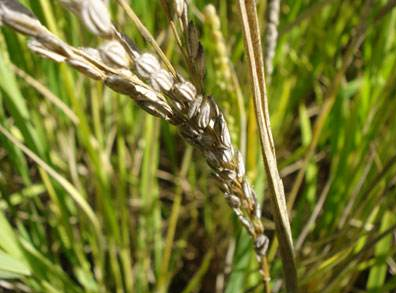Identification and control of rice blast
Rice blast is also called rice fever, which can occur throughout the growing season of rice, with the greatest impact on leaf blast and ear mites. The leaf mites mainly occur in the four-leaf stage and the tillering stage of the seedlings. The common lesions are acute and chronic. The acute type of lesion has an elliptical shape, dark green water stains, and a large number of gray-green moldy conidia on the back, which is a sign of disease prevalence. Chronic lesions are fusiform, and when the humidity is high, gray-green mold can also be produced on the back of the lesion, indicating that the disease may spread. Thrifts make the rice section black and the stems are easy to break. The onset of the neck is the ear stalk (the cob and the stalk can also be afflicted), the lesion is brown to dark brown, the white ear is formed early in the ear and neck, the late sorghum is increased, and the grain weight is reduced. The grain mites are brownish spots or grayish white to dark gray lesions on the grain and are a fungal disease. Pathogens overwinter on diseased straw and grain. The germs on the haystack can survive for more than 1 year, and spores in the rain and rain, spreading with the wind and rain. When the temperature is between 25 °C and 28 °C, the rainy weather is too warm, the sunshine is insufficient, the low temperature and rainy rain during the earing stage, the fertilizer and water management are improper, and it is the susceptible disease planted, which is the most susceptible to disease.

The key to the prevention and treatment of rice blast is rational use of drugs. On the basis of doing a good job of forecasting and forecasting, we must seize the appropriate period of prevention and control for chemical control. The most suitable agents for controlling rice blast are Fuji No. 40% emulsion and tricycloazole 20% wettable powder, and each of them uses 50 to 100 grams of water per 100 grams of water.
Rice from booting to heading, more rainy weather. And 1% of the rice plants have disease spots on the flag leaves, and should be used for prevention and treatment once in the booting stage and the heading stage. When applying the medicine, it is necessary to ensure that the amount of the liquid used in the mu is not less than 100 kg, so that uniform spraying can be performed to prevent leakage treatment, and the upper and lower sides of the seedlings and the front and back sides of the leaves should be sprayed with the liquid medicine.
Jiangsu Asbao Medical Technology Co., Ltd. , https://www.iigloves.com